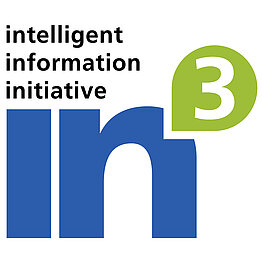
Smart descriptions for smart products
The paper manual is no longer in fashion. tekom’s in3 intelligent information initiative can support you on your path to digitalization.
Initial Position
At present, there is a lot of talk about the digitization of all areas of life. Several existing pioneer projects, such as Smart Services, Smart Mobility, Smart Home, e-Health, Sharing Economy, Smart Factory and cyberphysical systems (Industry 4.0), Internet of Things, etc., are being hyped by the media and interested parties. That there has been surface penetration and, in particular, the involvement of all demographics, is not in doubt. Ethical, social, labor law, copyright and data security issues have not yet been resolved. Entire occupations and communities are still deeply rooted in the analog world. And even the technical foundations for new forms of production have not made the right kind of progress – see the German associations’ Industry 4.0 initiative, which has meanwhile been “adopted” by the federal government.
In the coming years, once the fog of hype has cleared, it will be necessary to implement what is socially acceptable, economically sensible and technically feasible.

"Smart" Information
In the discourse that has dominated up until now, the question of digitalization that has been neglected is how to design information delivery for users of physical products, software or services in the future.
Discussions within the technical communication profession have, for years, revolved around the structured creation and dynamic publication of user information, but under the aspect of process efficiency. According to surveys by tekom, though many firms use Component Content Management Systems (CCMS) as an editorial system, they have, up to this point, focused mainly on the efficient creation, including translation, of user information. The user side has been largely ignored. This has become clear through the eruptive spread of mobile devices: although “mobile documentation” has been tackled by many firms, it has not yet been satisfactorily integrated, either as a concept or technically.
Improvements with respect to smart products and services must target the dynamic delivery of individualized, context-sensitive user information that integrates user information into the digital value creation chain and heightens the “user experience”.
This creation must be more firmly grounded in analyses of target groups and use cases. The use of diverse delivery media such as
- paper (classic manuals),
- on-screen (information embedded in the device),
- online (accessible via the Web or downloadable information),
- mobile (usable via “smart devices” like phones or tablets) or
- Augmented Reality (visualized via data glasses or mobile devices)
is derived from the relevant use cases.
The creation of “smart” information products requires the definition, input and management of metadata. With the help of these, dynamic access to information modules (topics) for various delivery media can be controlled.

Paper vs. Electronic Delivery
Generally, the delivery of product-relevant information in digital form should be encouraged. The following advantages speak in favor of this:
- clear relevance to the product
- easy to find
- available
- individually customizable
- modularization
- researchable
- updatable
This offers users significantly higher usability of information as well as adding value. This clearly better “user experience” will encourage users in both the private and commercial spheres to appreciate the new possibilities.
Paper is no longer suitable for concepts like Industry 4.0. It should be regarded as a use case. Paper is then always required if
- the users want it (especially consumers who put into operation and use household appliances, home electronics, do-it-yourself tools etc.),
- customers demand it (especially industrial customers who use the information in difficult use environments, e.g. construction sites), as well as if
- legal requirements exist regarding the availability of user information, particularly with regard to product safety.
tekom's "Intelligent Information Initiative – in3"
With this initiative, the European Professional Association for Technical Communication hopes to motivate its members to confront the explosive changes accompanying digitalization. The most important goals in doing so are
- the use of structured creation methods and the use of CCMS including promoting metadata,
- to apply accepted technical standards for content structure as well as for the exchange, connection and integration of content,
- to integrate target group analyses, use analyses and the creation of use cases and media concepts in their process,
- to focus on a comprehensive “User Experience – UX” in the future and to create excitement about information products among users.

In order to support its members in implementing these goals, tekom is planning to make the topic in3 a focus of its activities in the years 2016 and 2017, particularly:
- at events (as a main focus at the annual conferences, a special topic at the spring conferences, and a topic at roadshows and smaller conferences)
- in publications (periodicals, monograph publications)
- in collaborations on international standardization
- in working out technical standards for the storage and exchange of content
- in reworking the tekom competency model for the training and further education of technical communicators
- in the tekom Deutschland working group “eDoc” (guidelines for the limitation of documentation in paper form)
- in lobbying and public relations
